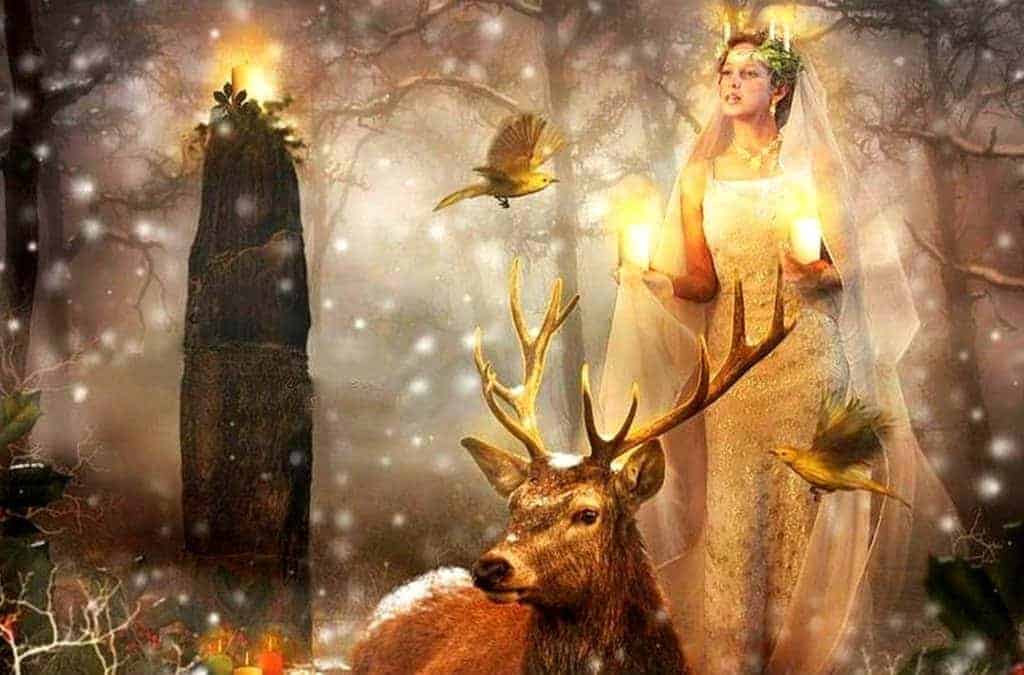Yule, rooted in Celtic and Nordic traditions, stands as a splendid illustration of how our ancestors found meaning and hope in natural cycles. Marked by the year’s shortest days and longest nights, this period symbolizes a time for introspection, renewal, and celebration.
The Winter Solstice Through the Ages: Celebrating the Cycle of Life and Light at Yule
The Yule festival intertwines with the history and traditions of the Celts and Nordic peoples. For the Celts, Samhain marked not only the year’s commencement but also the beginning of a period of profound spiritual connection with nature. In Nordic countries, Mother’s Night, coinciding with the start of the year on December 25, was a moment for commemoration and veneration, where ancient pagan practices merged with Celtic mysticism.
Yule, derived from Old English ‘Jul’, symbolizes the wheel of the year, marking the end of one cycle and the onset of another. Centered on abundance and gratitude, the festival represents the sun’s rebirth and the promise of brighter days ahead. It’s a reminder that even in winter’s darkness, light and life prevail.
For ancient civilizations, the winter solstice was a pivotal moment, marking a turning point in the year. Yule’s celebration symbolized the triumph of light over darkness, a time for family unity and gratitude to deities. It was a period celebrating the end of one cycle and the birth of another, reflecting nature’s eternal dance.
From Inti Raymi to Yule: A Journey Through the World’s Solar Traditions
How Yule Shaped the Celebration of Christmas and the New Year
Inti Raymi, celebrated in South America, and the story of the solar god Balder in Norse mythology, are examples of how different cultures have interpreted this natural phenomenon. These festivities, though separated by continents and cultures, share the same essence: the celebration of the sun and its vital importance to life.
The contemporary practice of lighting candles and decorating with colored lights during Christmas festivities echoes ancient Yule rituals. This connection between past and present shows how current generations can find deeper meaning in festive traditions, connecting with ancestral roots and nature.
Yule is not just an ancient pagan holiday; it’s the precursor to many current traditions like Christmas and New Year’s. The integration of Yule elements into these modern festivities demonstrates how cultures have influenced and enriched each other over time.
From Pagans to Pines: The Evolution of Yule in the Christian Era
The Transformation of Yule in the Christian Era
With the spread of Christianity, Yule festivities underwent a metamorphosis, adapting and merging with Christian celebrations. Today, elements like the Christmas tree and the use of mistletoe are living testimonies of this rich cultural history.
Presently, Yule remains a vibrant and relevant holiday. Beyond its physical manifestations, Yule is a time for reflection, spiritual renewal, and connecting with our roots. Celebrating Yule means honoring not just our ancestors but also nature and the eternal cycles that surround and define us.
At its core, Yule is a reminder of our unbreakable connection with the past and a bridge to a future where respect for nature and ancestral wisdom remain paramount.
The Eternal Cycle of Avalon: The Eight Sacred Festivals
Explore the mystical cycle of Avalon’s Year Wheel, a journey through eight sacred festivals intertwined with the natural rhythms of the sun and moon. Discover how each celebration, from Yule to Samhain, honors the various manifestations of the Lady of Avalon and the Morgens, revealing a deep connection with nature and the cosmos… Read More>>

